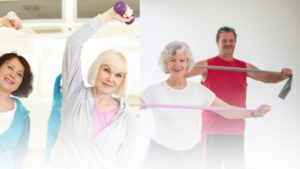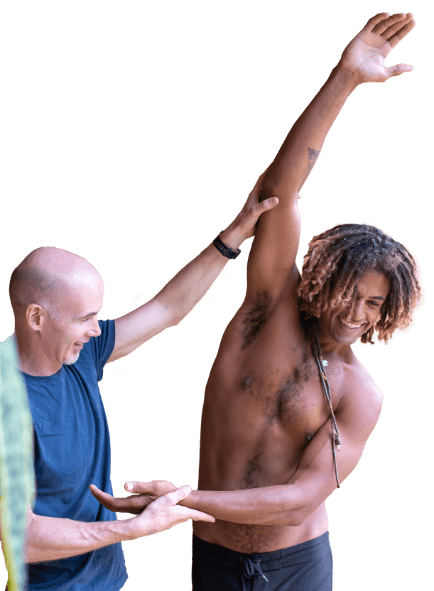
Moving Forward – Staying Active with Scoliosis
By Ed Paget, Osteopath & Creator of the Scoliosis Correction Protocol

If you have scoliosis and you’re unsure how to move without making things worse, you’re not alone. A lot of people I speak with have either been told to avoid exercise altogether or they’ve tried things that didn’t help—or made their pain worse.
The truth is, movement can help, but it needs to be the right kind of movement. That’s what inspired me to create the Scoliosis Correction Protocol—a program built on years of clinical experience, focused on mobility, strength, and endurance tailored to your spine.
Here’s what I want you to know about exercising with scoliosis.
If you’re just getting started or coming back from a break, don’t jump into high-intensity training.
Walking, swimming, and cycling are good choices. They get your muscles working without compressing the spine.
Swimming stands out because water reduces pressure on the joints while giving you full freedom to move. You don’t need to swim laps for an hour—a short 15–20 minute swim a few times a week is a solid start.
You need core strength, but not from crunches or sit-ups. Those often overload the spine.
Instead, focus on controlled movements that stabilize the deep abdominal and spinal muscles.
Start with:
These help reduce pain, improve alignment, and give your spine more support.
For those of you looking for something more functional I would suggest a wood chop type movement, and you get bonus points if you can do it in a direction that will help decrease the rotation often associated with scoliosis.
Tight hips, shoulders, or hamstrings can increase the work load to your spine. Stretching those areas daily makes a big difference.
Use gentle, scoliosis-aware stretches like:
These don’t fix the curve, but they help reduce pressure and increase comfort.
Poor foot mechanics can pull everything above them out of place.
If one leg feels shorter, or if your feet roll in or out when you walk, that can aggravate scoliosis.
Use supportive shoes and talk to a physical therapist or biomechanical specialist if you think orthotics might help. Small changes here can improve how your whole body moves.
One exercise I really like is called the “Foot Core” exercise and it actually helps strengthen your feet – try it:
Foot Core Exercise
Discomfort during a workout is one thing. Sharp, stabbing, or lingering pain is another.
Learn to tell the difference.
If something doesn’t feel right, adjust your intensity, change the movement, or stop and switch to something gentler.
More is not always better. Listening to your body keeps you in the game long-term.
If you repeat the same motion over and over—especially with scoliosis—you’ll reinforce your asymmetries.
Cross-training helps by working different muscle groups and avoiding overload.
Try mixing:
It keeps your body balanced and your routine interesting.
Your goal isn’t perfect posture or a completely straight spine. It’s control, strength, and confidence.
You don’t need to train every day. Two or three focused sessions per week can lead to lasting change if they’re done right.
What matters most is staying consistent and adjusting your routine based on how you feel.
You can live well with scoliosis. You can move with less pain. You can build a stronger, more balanced body.
These aren’t just ideas—they’re the foundation of the Scoliosis Correction Protocol. It’s designed to meet you where you are and grow with you.
If you’re ready to take a more targeted approach to exercise, you can book a call with me or one of my team and together we’ll figure out the best next step for you.
https://scoliosiscorrectionprotocol.com/one-on-one-training527366

Over the last 10 years Ed has been building a YouTube library to help people manage their own pain or movement limitations and increase performance through exercise. He regularly adds videos so be sure to subscribe and visit regularly


"Oh My Gosh- I am ALREADY feeling relief after a few days! I used to wake up 2-3 times a night with shooting pain that anti inflammatories couldn't touch. Now I have been waking up just because I want to notice what it feels like to lay in bed pain free- THANK YOU!."

"When I first started with your program I was experience a lot of pain. Walking was difficult. I had to stop and catch my breath every few minutes and lean against a wall for support. Now when I walk with my husband we go for over an hour. I never had to sit down and stop...and, hardly any pain!!! 😊😊 I can’t thank you enough."
Frustrated that you aren't recovering fast enough?
Discover how to heal from illness and injury using movement, food and lifestyle.